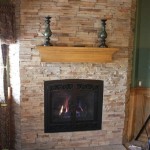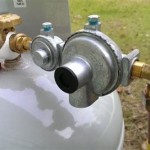Two-Way Fireplace Insert: Aesthetics and Functionality Combined
A two-way fireplace insert, also known as a see-through or peninsula fireplace insert, offers a unique focal point within a home, providing warmth and visual appeal to two adjacent spaces simultaneously. This type of fireplace insert presents a significant departure from traditional, single-sided fireplaces, offering both aesthetic and functional advantages.
The core concept behind a two-way fireplace insert is its ability to be viewed from both sides. This is achieved through a design that features glass panels on opposing faces, allowing the fire to be seen and felt from two distinct areas. The implementation of this design requires careful consideration of venting, fuel source, and safety features, ensuring efficient and safe operation within the intended architectural context.
Two-way fireplace inserts are available in a range of fuel types, including gas, electric, and wood-burning models. Each type presents its own set of characteristics regarding installation, maintenance, and operational considerations. The choice of fuel type will profoundly impact the overall design, cost, and environmental impact of the fireplace insert.
Enhanced Aesthetic Appeal and Spatial Division
One of the primary advantages of a two-way fireplace insert lies in its ability to enhance the aesthetic appeal of multiple rooms. Instead of being confined to a single space, the fire becomes a shared element, creating a visual connection between two areas. This is particularly beneficial in open-concept homes, where the fireplace can serve as a subtle divider while maintaining a sense of continuity.
The architectural possibilities offered by a two-way fireplace insert are extensive. It can be strategically positioned to define a living room from a dining area, separate a kitchen from a family room, or even connect an indoor space with an outdoor patio. This design flexibility allows homeowners to create unique living environments tailored to their specific needs and preferences.
Modern two-way fireplace inserts often incorporate advanced design features, such as clean-face designs, which minimize the visible framing around the glass panels, further enhancing the unobstructed view of the fire. Decorative options, including various log sets, fire glass, and refractory panels, allow for customization to match the overall décor of the home. The ability to personalize the appearance of the fireplace is a key factor in its appeal to many homeowners.
Lighting also plays a considerable role in the visual impact. Many models include integrated lighting systems that can be adjusted to create different moods and highlight the fire's natural beauty. This lighting can be independent of the fire itself, allowing the fireplace to serve as an ambient light source even when not actively burning.
Functional Heating and Energy Efficiency
Beyond its aesthetic value, a two-way fireplace insert can provide a significant source of supplemental heat. Modern inserts are designed to be highly efficient, extracting a large percentage of the fuel's energy and converting it into usable heat. This can help reduce reliance on central heating systems, particularly in colder climates.
The efficiency of a two-way fireplace insert depends largely on the fuel type and the specific design of the unit. Gas inserts, for example, often feature sealed combustion systems that draw air from outside the home, preventing drafts and improving efficiency. Wood-burning inserts, on the other hand, may incorporate catalytic converters or secondary combustion chambers to reduce emissions and increase heat output.
Electric fireplace inserts are often the easiest to install and operate, requiring only a standard electrical outlet. While they may not produce the same level of heat as gas or wood-burning models, they are an excellent choice for supplemental heating and can be easily controlled with a thermostat. The energy efficiency of electric models has improved significantly in recent years with the adoption of LED technology for flame simulation.
The placement of the two-way fireplace insert also impacts its heating effectiveness. Strategic positioning can help distribute heat evenly throughout the two adjacent spaces, creating a more comfortable environment. Consideration should be given to the natural airflow patterns within the home to maximize the efficiency of the heating system. Factors such as insulation levels, window placement, and ceiling height will all influence heat distribution.
Installation and Safety Considerations
The installation of a two-way fireplace insert is a complex process that requires careful planning and adherence to local building codes and regulations. It is generally recommended that installation be performed by a qualified professional to ensure safe and proper operation. Improper installation can lead to safety hazards, such as carbon monoxide leaks or fire risks.
Venting is a critical aspect of fireplace insert installation, particularly for gas and wood-burning models. The venting system must be properly sized and installed to ensure that combustion gases are safely exhausted outside the home. Different fuel types require different venting systems, and it is essential to choose the appropriate system for the specific fireplace insert.
Safety features are also paramount. All fireplace inserts should be equipped with safety features such as automatic shut-off valves for gas models and spark arrestors for wood-burning models. Carbon monoxide detectors should be installed in the vicinity of the fireplace to provide an early warning of any potential leaks. Regular maintenance, including cleaning and inspection, is essential to ensure the continued safe operation of the fireplace insert.
Electric fireplace inserts offer a simpler installation process compared to gas or wood-burning models. They do not require venting and can often be installed in existing fireplace openings with minimal modifications. However, it is still important to follow the manufacturer's instructions and ensure that the electrical system is adequate to handle the load of the fireplace insert.
Fire-resistant materials must be used in the construction of the fireplace surround and any adjacent walls or floors. This is particularly important for wood-burning models, which can generate high temperatures. Proper clearances must be maintained between the fireplace and any combustible materials to prevent fire hazards.
Accessibility for cleaning and maintenance should also be considered during installation. The ability to easily access the firebox, venting system, and other components is essential for ensuring the long-term performance and safety of the fireplace insert. Inspection ports and removable panels can facilitate maintenance and repairs.
Consideration must be given to the flooring material surrounding the fireplace insert. Non-combustible materials such as tile, stone, or concrete are recommended to prevent scorching or fire hazards. Carpeting and other flammable materials should be kept a safe distance from the fireplace opening.
The glass panels of a two-way fireplace insert are designed to withstand high temperatures. However, they should be handled with care to avoid scratches or cracks. Regular cleaning with a specialized glass cleaner is essential to maintain a clear view of the fire. Abrasive cleaners should be avoided as they can damage the glass surface.
The overall design and aesthetics of the surrounding space should be carefully considered during the installation process. The fireplace insert should be integrated seamlessly into the existing architecture and décor to create a cohesive and visually appealing environment. This may involve custom framing, mantel design, and the selection of complementary materials and finishes.
Choosing a qualified and experienced installer is crucial for ensuring a safe and successful installation. Look for installers who are certified and insured and who have a proven track record of installing two-way fireplace inserts. Check references and read online reviews to get a sense of the installer's reputation and quality of work.
Ultimately, a two-way fireplace insert offers a unique and versatile solution for homeowners seeking to enhance the aesthetics and functionality of their living spaces. By carefully considering the fuel type, design features, installation requirements, and safety considerations, homeowners can create a stunning and efficient focal point that will be enjoyed for years to come.

Double Sided Fireplace Insert 1050 Jetmaster Wood Burning

Flex 60db Bx1 Double Sided Fireplace Insert Ecosmart Fire

Statuette Of Double Sided Gas Fireplace Warmer Unique Room Divider And Interior Accent Remodel Freestanding

Flex 158db Double Sided Fireplace Insert Ecosmart Fire

Double Sided Fireplace Insert NÉo 67 76 Vl1 D Supra France Wood Burning

Multi Sided Fireplaces Zoroast The Fireplace

Double Sided Fireplace Insert 2 1 Rais Wood Burning

Pros And Cons Of Double Sided Fireplace Modus Fireplaces

White Mountain Hearth Dvct40csp Out Rushmore Clean Face Direct Vent Double Sided Indoor Outdoor Fireplace With

Fireplaceinsert Com Supreme Opus Double Sided Fireplace
Related Posts








